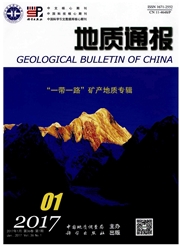

 中文摘要:
中文摘要:
土壤有效热导系数和水流通量是研究大气-土壤系统水分转化的重要变量。采用动态回归模型(DHR)获取土壤温度的振幅和相位变化,联合土壤水热耦合方程的解析解估算土壤有效热导系数和土壤水流通量,并将该方法应用于毛乌素沙地的土壤水流通量估算中。结果显示,实例研究估算获得的有效热导系数在10-7m2/s数量级变化,且随振幅比的增加呈指数增加,随相位差的增加呈指数衰减。当土壤含水率小于0.08时,有效热导系数呈线性增加;当土壤含水率大于0.08时,接近恒定值(定量0.08),土壤水流通量随土壤含水率的变化无明显的线性关系。
 英文摘要:
英文摘要:
Effective heat conductivity and soil water flux are important in atmosphere-soil systems. Because of the lower cost and stability of the soil temperature instruments, the temperature tracer methods have been widely applied to estimating water flux. Yet, the non-ideal sine changes of soil temperature caused by clouds, precipitation and some other factors hinder the use of that method under the condition of forced sine changes of soil temperature. To overcome this default, the authors use the Dynamic Harmonic Regression method to extract the amplitude and phase of soil temperature and then apply the results to the analytical solution of incorporation of heat and water equation to calculate the effective thermal conductivity and water flux. The method was applied to the field experimental data collected from the Mau Us Desert. The analytical results show that: 1effective thermal conductivity changes are around 10-7m2/s and increase along with the increase of amplitude ratio and decrease of difference of phase; 2effective thermal conductivity increases liberally with soil water content when soil water content is smaller than 0.08, but remains at a certain value when soil water content is large than 0.08; 3there exists no obvious relationship between soil water flux and soil water content. The research results have the scientific and practical value for guiding the calculation of soil water flux.
 同期刊论文项目
同期刊论文项目
 同项目期刊论文
同项目期刊论文
 期刊信息
期刊信息
